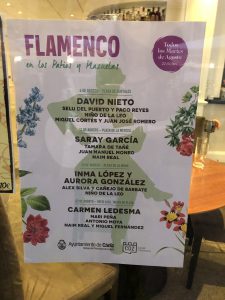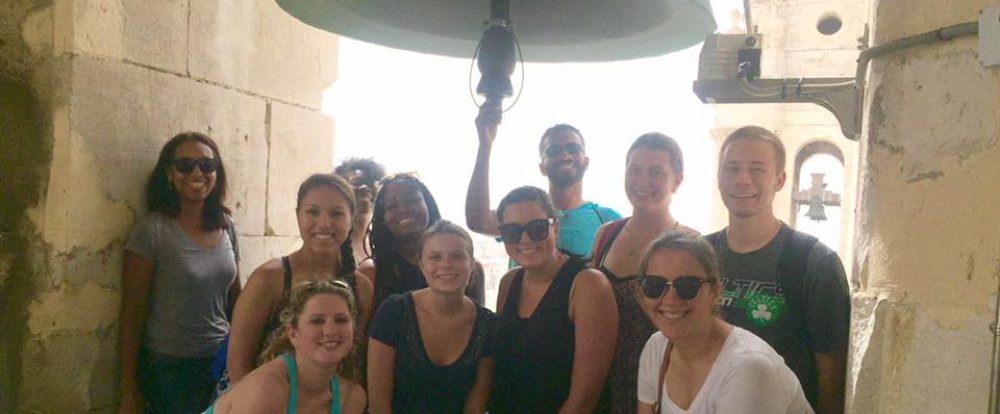The flamenco is something that a lot of people recognize as something traditionally Spanish, but its origins aren’t so clear. It is still a very Spanish tradition, but it’s constantly been changing and influenced by different groups such as the Muslims, Jewish and slaves from Cuba. Regardless of its origins, flamenco is something very easy to find and enjoy in Spain. Some groups are even starting to merge it with other genres such as rock or jazz, creating a modern hybrid of genres.

For those who don’t know, flamenco uses a few key instruments: the guitar, palmas (palms), the voice, sometimes castanets and the cajon. The cajon is a more modern addition to flamenco, coming from Paco de Lucia’s trip to Peru. He was referred to as one of the greatest flamenco guitarists and when he went to Peru, he encountered an instrument there that he wanted to adapt for flamenco. A cajon is a type of hollow box that produces different sounds when you hit it in different places and is now a very popular instrument for flamenco. In the workshop we attended, with Maria la Monica, she brought along a cajon that she used for making her music.
When it comes to the dancing, the feet could also be considered an instrument. Just like the palms, they can keep the beat. The dancer and the person keeping beat just have to be careful not to stray off tempo and move too quickly. They have to keep with the guitar and whatever other instruments are there, so they all work together. This seems complicated, especially when it’s a spontaneous art form that depends on the moment rather than rehearsal.
Flamenco is more similar to jazz in the sense that it’s more spontaneous, in the moment and based off of how the artists feel. Our workshop with Maria la Monica felt kind of like a “jam session” because there was no organized piece of music, just what they felt like playing in the moment. In the lesson, we were taught an expression that is used when the artist does something unexpected with the music, “olé”. An olé has to be spontaneous and genuine, even though we practiced a planned one to understand the basic idea.
For our workshop, Maria explained that she comes from a “flamenco family”. Basically, this means that her family lives a flamenco style life. There were jam sessions and spontaneous music and dancing while they had a sort of different attitude about the music. They see it more as a way of life than a kind of music, they “live flamenco” in their everyday. Now this is by no means the situation for every family in Spain, but it is really interesting to think about how there’s nothing really similar in the U.S. to this style of living. The emphasis on freedom, music and expression does sound a bit like the 1960’s in the states but it’s the modern reality for families like Maria la Monica’s in Spain today.
